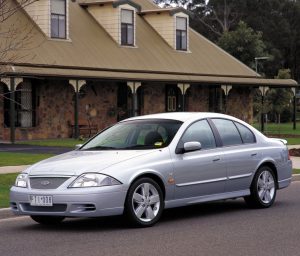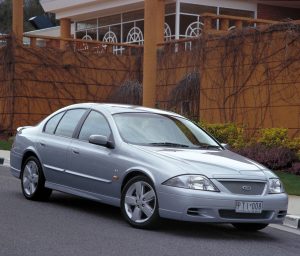Recalls: Ford T-Series TE50
Overview
Manufacturers, or importers, issue recalls for defects or faults which have the potential to cause injury. Generally, manufacturers will inform the original buyers if their vehicle is subject to a recall and of the steps required to remedy the defect or fault. Please note that the recalls below (if any) are for Australian-delivered vehicles only. Furthermore, the number of recalls should not be taken as an indication of a model’s reliability or its safety more generally.
Recalls: Ford T-Series TE50
Ford TE50: steering rack mounting stud
In June 2004, a recall was issued for Ford T-Series TE50 models manufactured from 1 June 1998 to 22 May 2001 (inclusive). For these vehicles, inappropriate servicing of the steering rack retaining hardware may affect the integrity of the steering rack mounting stud. Furthermore, over-tightening of the steering rack mounting hardware may degrade the thread-locking compound (PRA 2004/7066).
Problems and faults: Ford T-Series TE50
Overview
This section identifies potential problems, causes and fixes based on the experiences of owners and repairers, online sources and technical service bulletins. This information is provided solely for reference purposes and AustralianCar.Reviews recommends that only properly qualified persons carry out repairs or modifications. Furthermore, the number of items below should not be taken as an indicator of a model’s reliability or the frequency with which they may occur.
To report a problem or fault to the AustralianCar.Reviews team, please use the Contact Us form. Note that AustralianCar.Reviews does not offer advice on automotive problems or disputes; such enquiries will not receive a reply. For vehicles purchased from dealers after 1 January 2011, please see our Australian Consumer Law fact sheet.
Engines
- Belt squeal and rattling noises from the engine bay may be due to a faulty accessory belt tensioner that requires replacement. If the tensioner fails, the accessory belt may snap, causing the power steering, alternator and water pump to stop working.
- A rough idle may be due to a loose inlet manifold which requires tightening or the spark plug leads may need to be replaced.
- AU.II and AU.III models were fitted with aluminium radiator cores with resin header tanks that were susceptible to failure.
- An extremely low oil pressure reading when the engine is hot and idling may actually be due to an electrical earthing problem.
- A ticking noise from behind the left headlight may be due to a failed purge valve solenoid.
- The O-ring seal at the back of the water pump was susceptible to leaking.
- Variable build quality for the V8 engines could result in rattling lifters, dropped valves, bore distortion and oil-burning.
Transmissions
- Oil may leak from the rear transmission seal.
Suspension
- Knocking noises from front suspension may be due to worn lower ball joints.
- Knocking noises from the front of the vehicle, vague steering and squeaking noises when turning are indicative of steering rack failure.
- For models with independent rear suspension, knocking or banging noises from the rear suspension may require the top shock absorbers mounts to be replaced.
Brakes
- Shuddering from the front wheels – which can be felt through the brake pedal – is indicative of warped brake discs.
- The level of power braking assistance may decrease due to the brake booster deteriorating – this was primarily a problem for AU.I models.
Problems and faults: Ford T-Series TE50
- For manual models, the firewall and pedal box could crack, enabling water to leak into the driver’s footwell. Reinforced brackets may help prevent further cracking in the firewall.
- The horn may stick when depressed or not sound at all, requiring the horn pad and airbag module (a single unit) to be replaced.
- Areas of the climate control display may stop working – this may be due to contact points on the PCB (printed circuit board) failing. If so, the unit needs to be replaced.
- The six-stack CD changers were susceptible to failure.
- Water could accumulate in the boot gutters, flow over the rubber seals and leak into the boot due to a poor seal between the boot and rubber seals.
- Problems with the door locks are usually due to the actuators failing.Inaccurate fuel gauge readings may require the fuel sender unit to be replaced.
- The front power windows may stop working due to dust within the switch blocking the contact points. Dissembling the switches and cleaning the contacts may fix the problem; alternatively, an aerosol contact cleaner could be sprayed into the switch via a nozzle. However, pressing the window switch up and down thirty-one (31) times may reset the window motor/regulator and restore operation.
- The front power windows may be slow to raise or may do so on an angle due to the glass sticking against the rubber seals – this can be fixed by lubricating the inside of the door frames with silicon spray or graphite powder.
- The fuel gauge may provide inaccurate readings due to faulty fuel senders.




